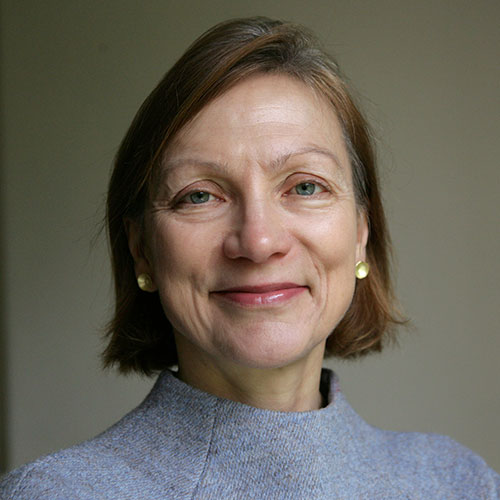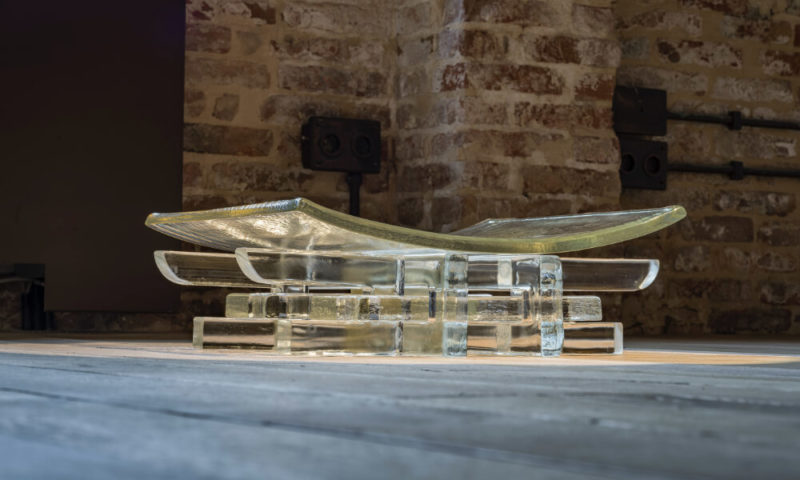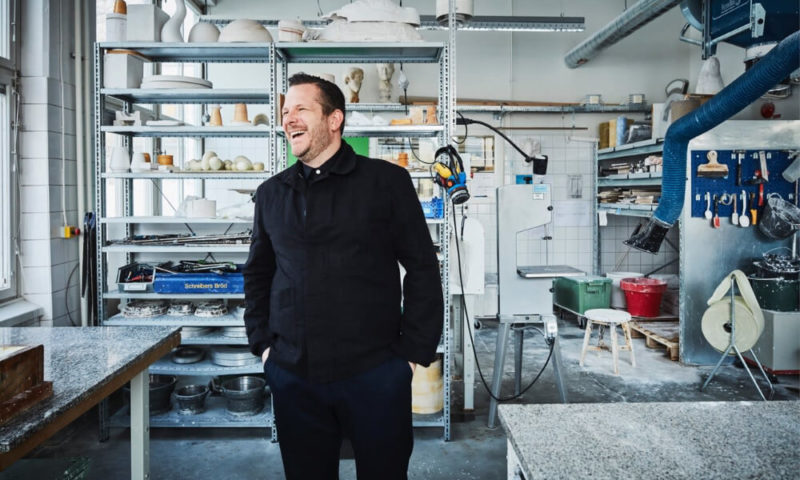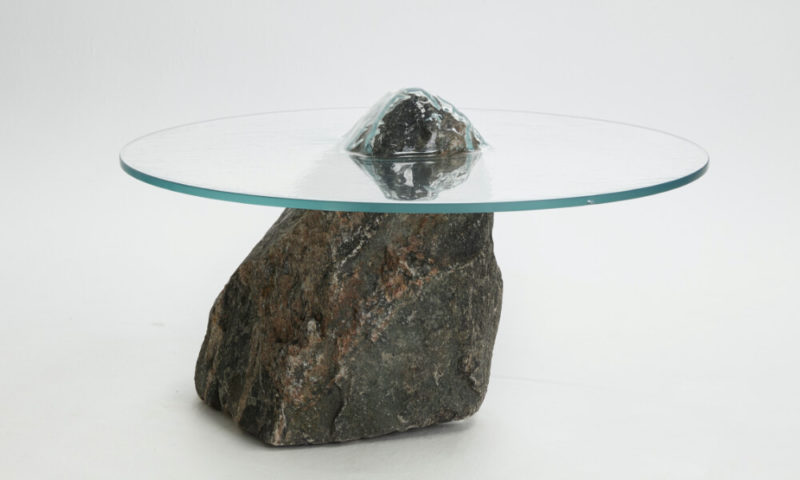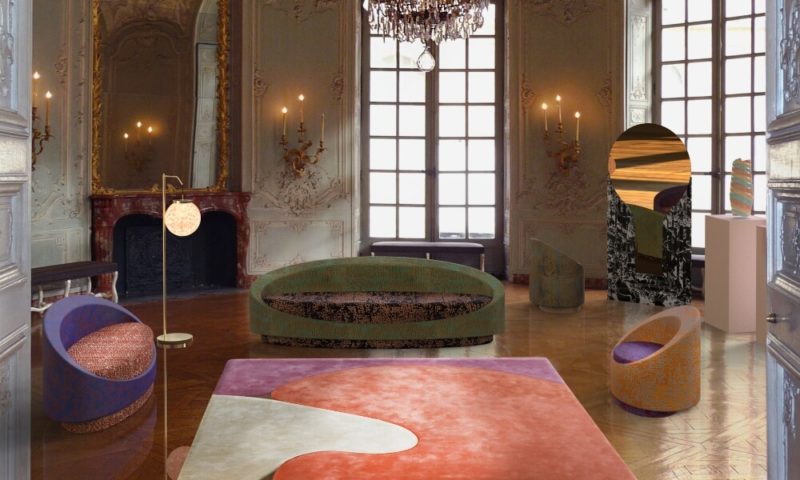LDF / ROUNDUP
A post-lockdown explosion of imagination and skilful execution.
Locations across London
12th – 20th September 2020
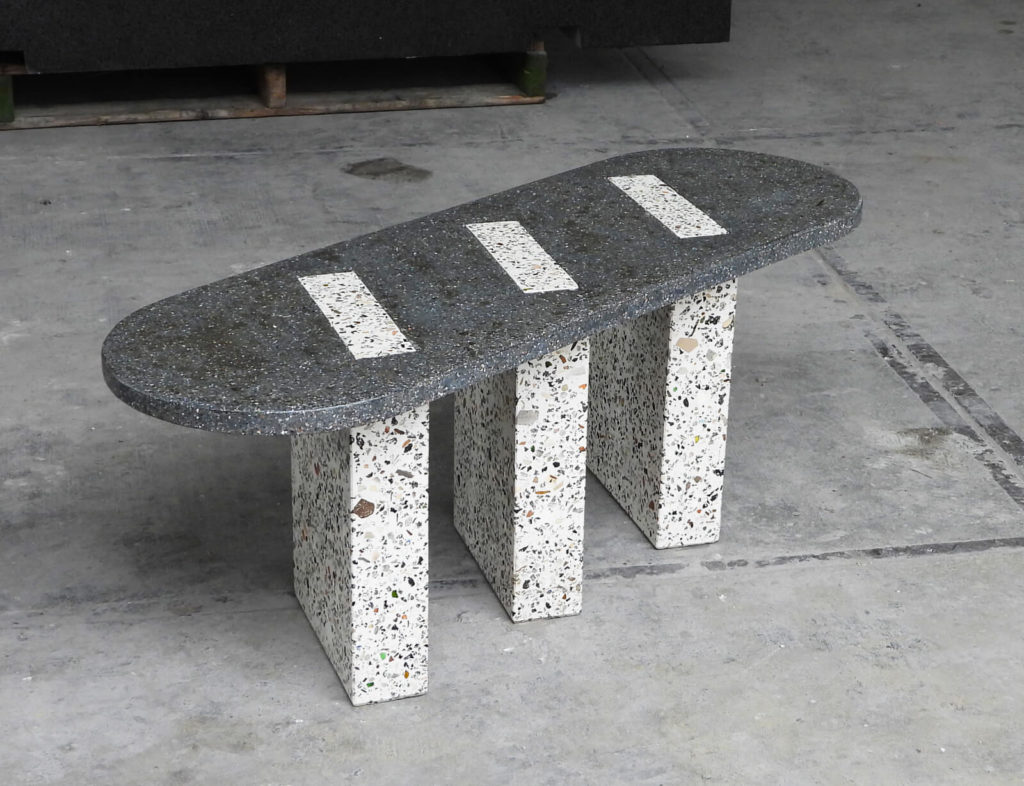
Carissa Ten Tije, ‘Bottom Ash Bench’, 2020
COURTESY: Mint © Design Academy Eindoven / PHOTOGRAPH: Nicole Marnati
The London Design Festival, always a wandering and multi-location celebration of the city’s myriad design businesses, has provided a much-needed uplift to the capital this week. Both online and in real life, it has conjured multiple opportunities to discover London’s creative talents and the new objects and products brought to fruition through lockdown. In doing so, it shines a light on the sector’s resilience, and the determination of designers not just to keep going – but to respond with imagination and daring to the current crisis.
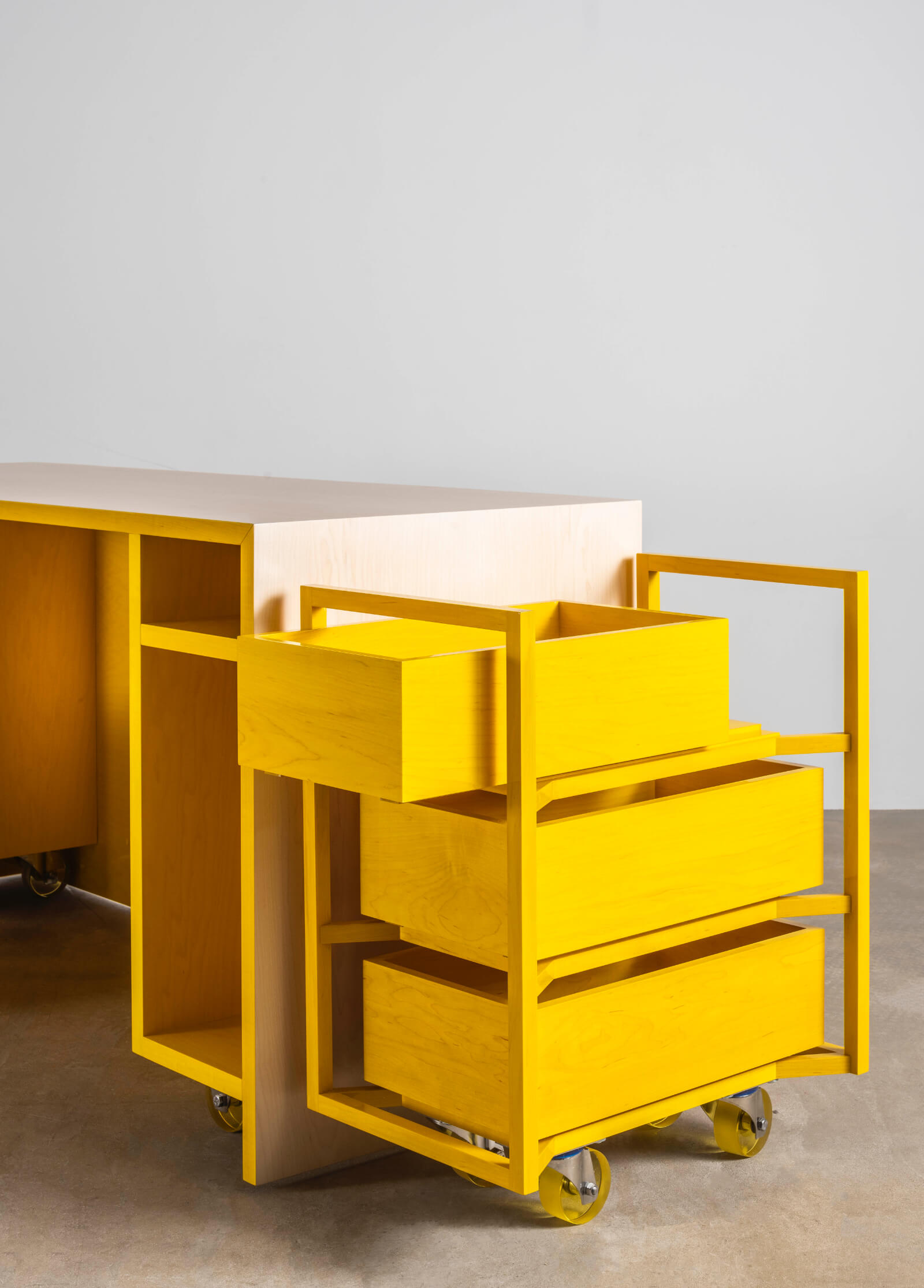
Sabine Marcelis, ‘Candy Cubicle’, 2020
COURTESY: Sabine Marcelis, AHEC & Benchmark
The Design Edit set out in the sun to see what was on offer.
The Design Museum is hosting Made Together Apart: Connected (until 11th October). The brain-child of the American Hardwood Export Council and The Design Museum, nine international designers were given the brief to create a table and seating for their personal use, to suit their new, improvisatory, ways of living and working from home. They were given the choice of three sustainable American hardwoods (red oak, maple or cherry) to work with and teamed up with the highly skilled Berkshire-based craft furniture makers, Benchmark.
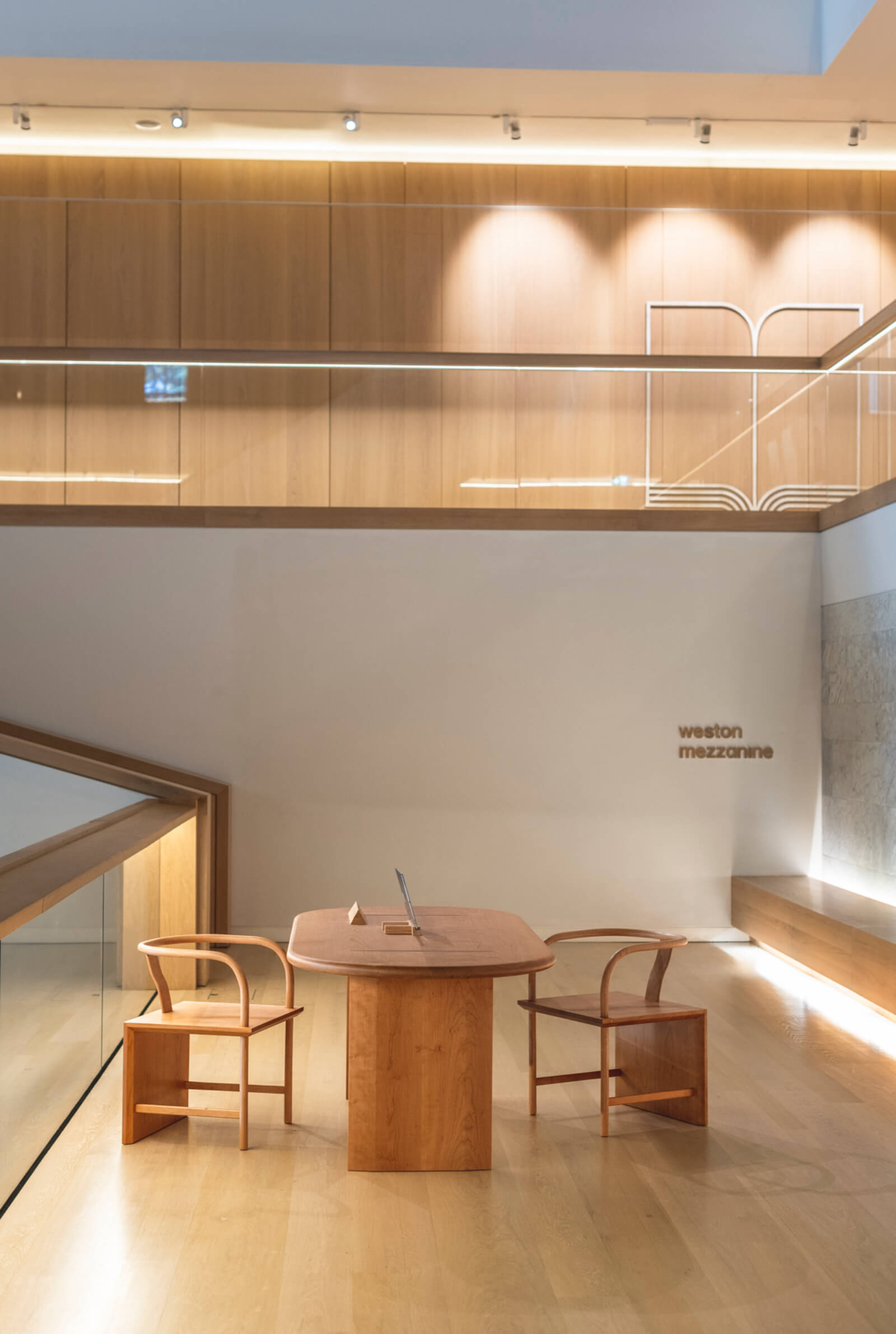
Studio Swine, ‘Humble Administrator’s Chair and Table’, 2020
COURTESY: AHEC & Benchmark / PHOTOGRAPH: David Cleveland
The designers, (Ini Archibong, based in Switzerland; Maria Bruun, from Denmark; Jaime Hayon, based in Spain; Heatherwick Studio, based in the UK; Sebastian Herkner, from Germany; Maria Jeglinska-Adamczewska, working from Poland; Sabine Marcelis, in the Netherlands; Studiopepe, from Milan; and Studio Swine, currently working out of Japan), had to trust new methods of remote working – using video conferencing, phone calls and countless emails – rather than the face-to-face conversations usually essential to the design process.
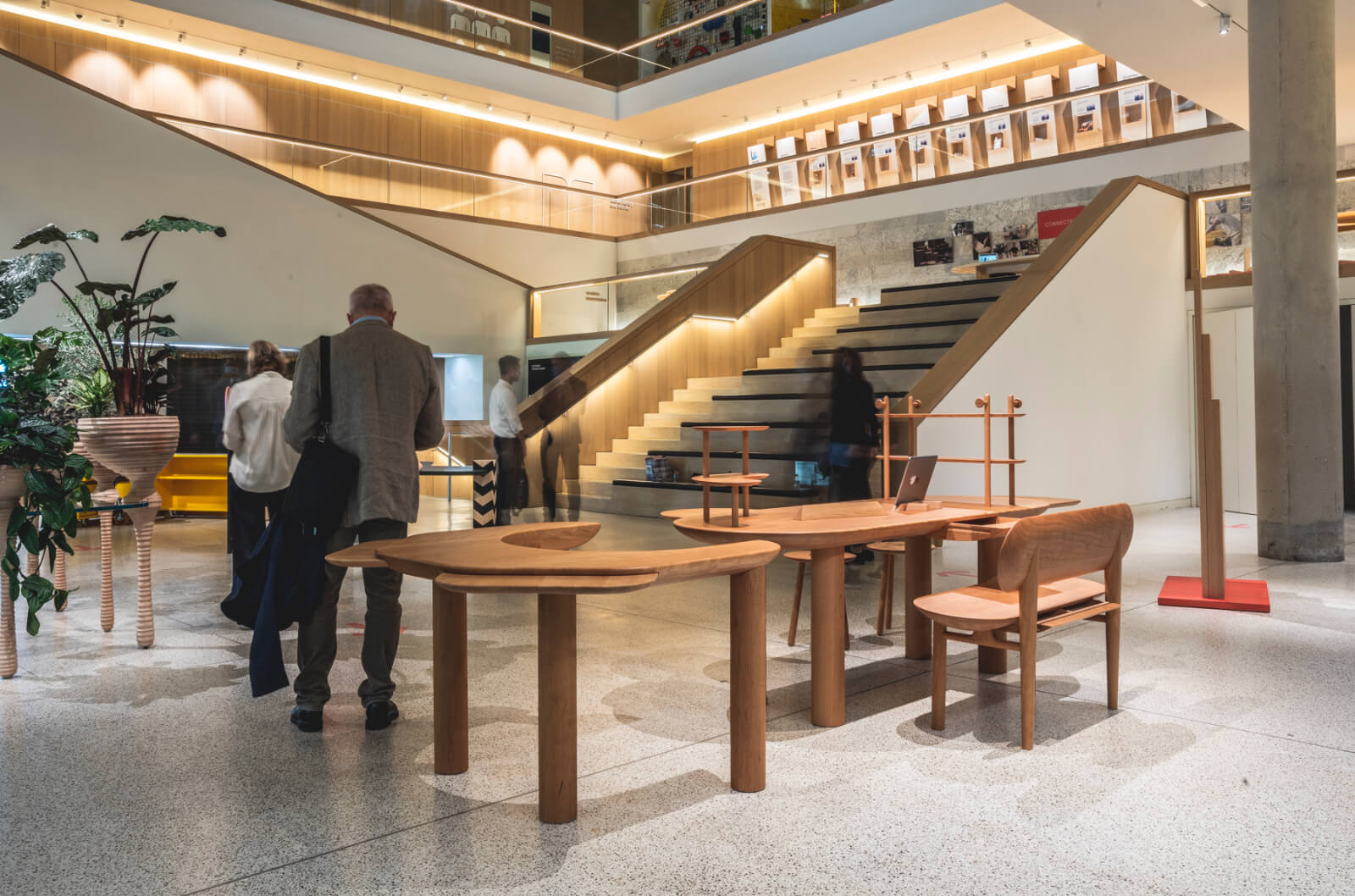
Installation view, Connected exhibition with Jaime Hayon, ‘Mesamachine’, 2020
COURTESY: AHEC & Benchmark / PHOTOGRAPH: David Cleveland
The results are stunning and original – from Jaime Hayon’s sleek, ingeniously adaptable cherrywood ‘Mesamachine’, to Thomas Heatherwick’s enchanting biophilic environment, the ‘Stem Table’ (the plateglass tabletop inserted into American maple legs, whose tops are roughly turned to form giant wooden cups holding exuberant plants).
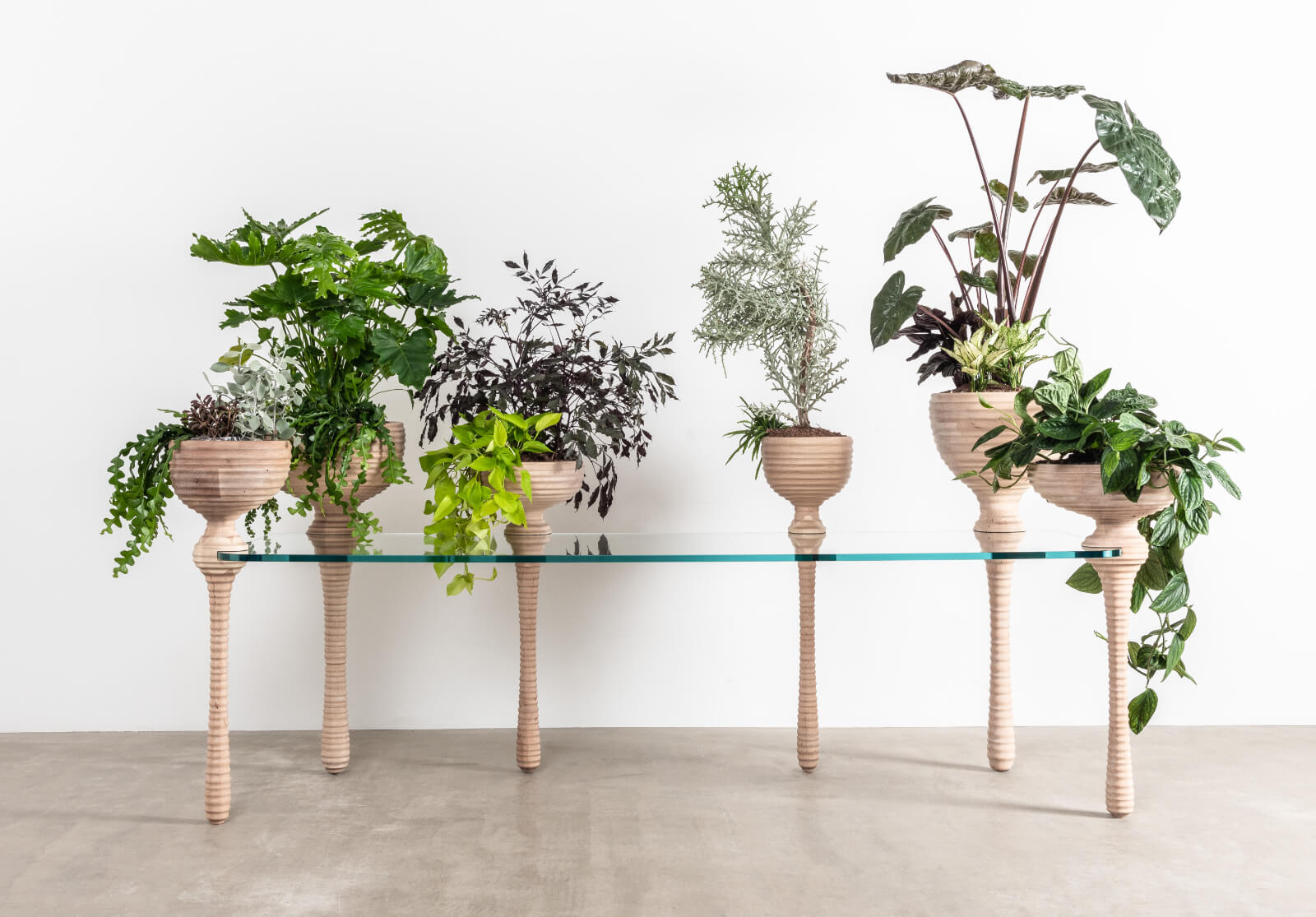
Thomas Heatherwick, ‘Stem’, 2020
COURTESY: AHEC & Benchmark / PHOTOGRAPH: David Cleveland
Milan-based Studiopepe has produced a distinctly feminine and cinematic celebration of the spring-time Pink moon, honoured in Native American mythology, while Sabine Marcelis’s ‘Candy Cubicle’ – inspired in turn by the suitcase scene in Pulp Fiction – hides its brilliant high gloss yellow lacquered workspace, complete with shelves and stool, inside a smooth folding maple-veneered rectangular prism, like a box. For all of us who have wedged work into kitchens, sitting rooms, or bedrooms, these pieces offer dream-like promises of calm, order and flexibility.
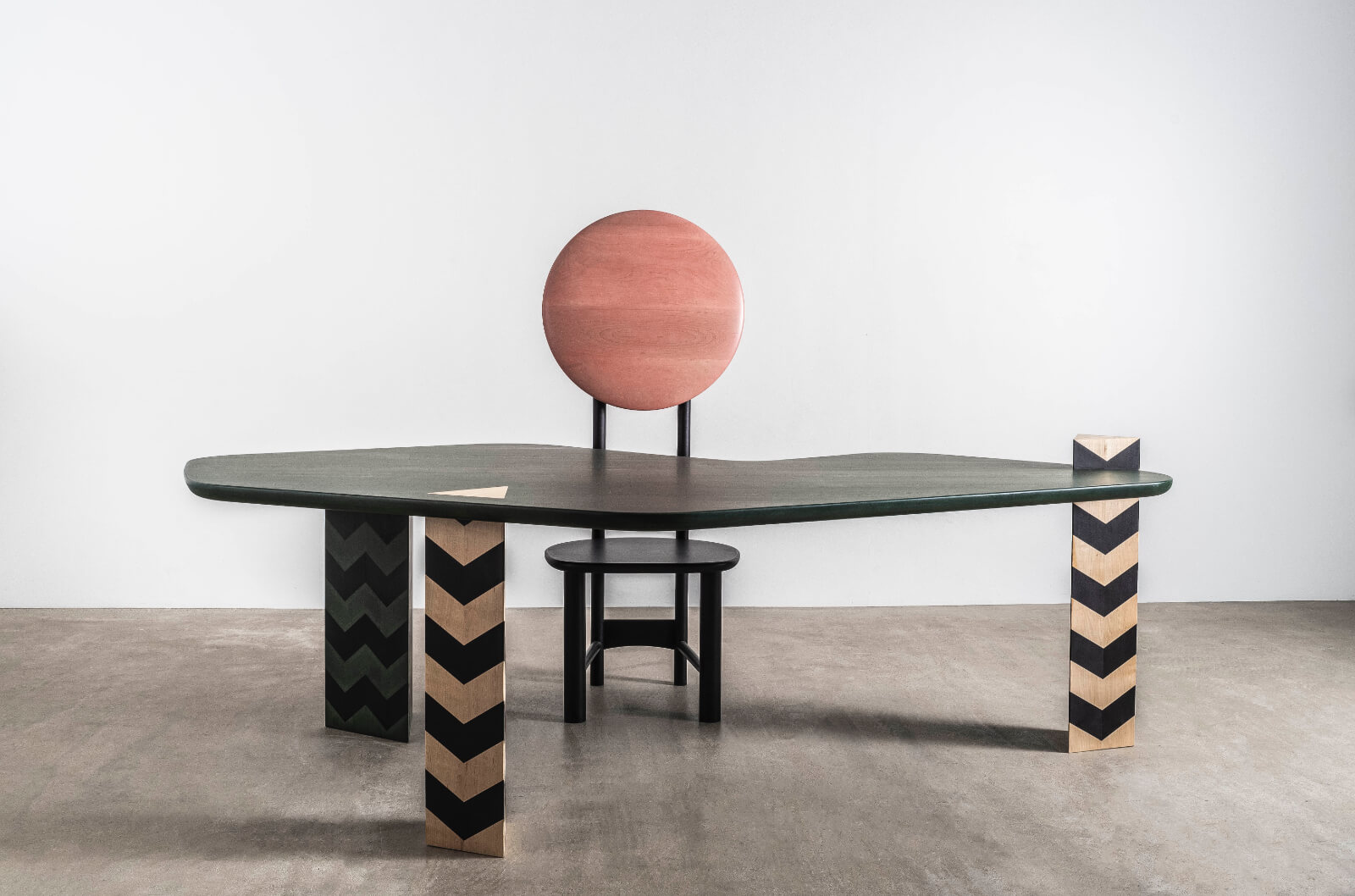
Studiopepe, ‘Pink Moon’, 2020
COURTESY: Studiopepe, AHEC & Benchmark
Meanwhile, outside the museum, under a lime tree, with sunlight dappling its glorious green surface, stands Ini Archibong’s table, as if rooted by its legs, embedded in a landscape of hardwood inspired by Northern Ireland’s Giant’s Causeway. It offers a genial summer vision of home-working to spur us through this early autumn.
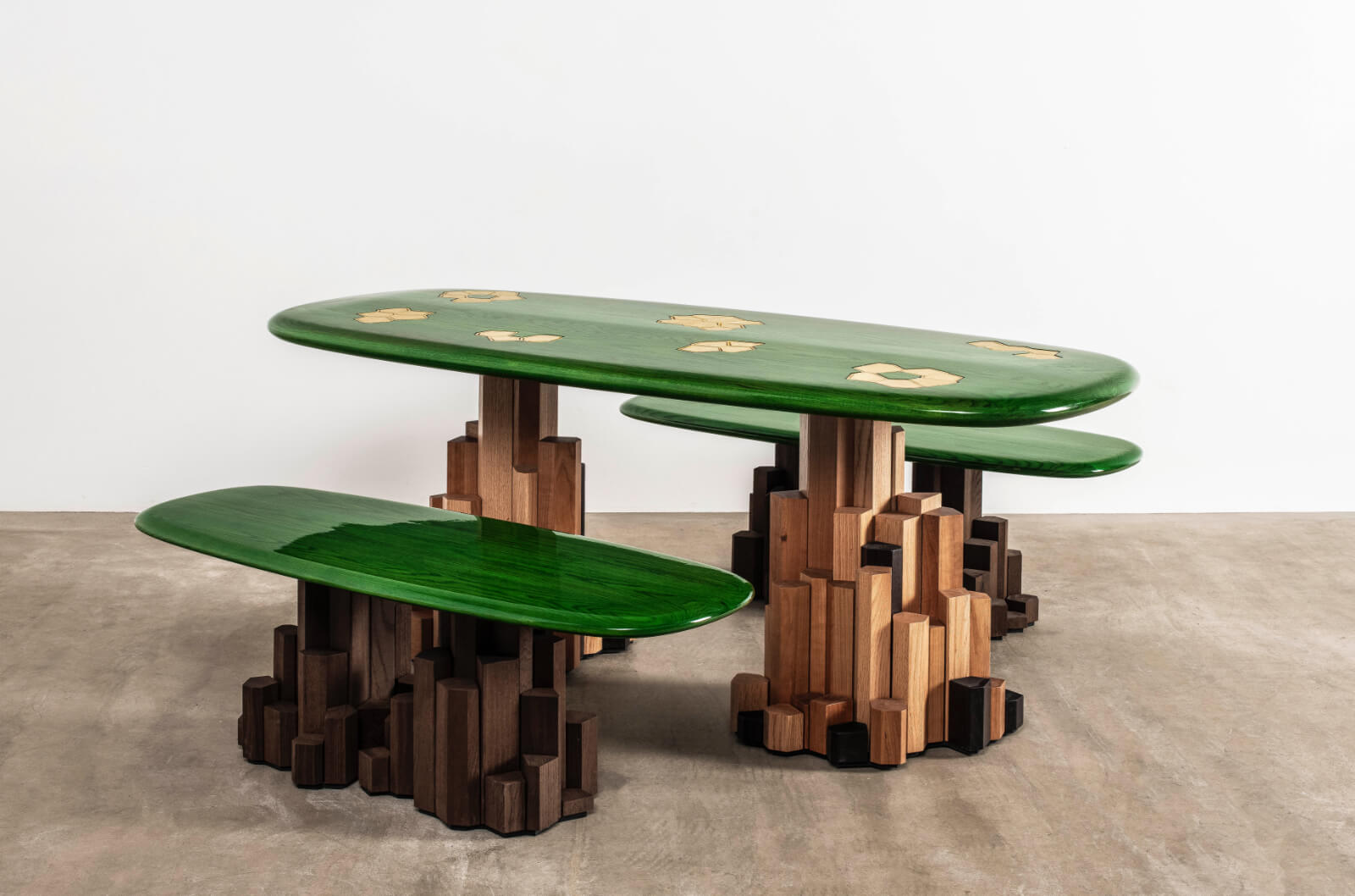
Ini Archibong, ‘Kadamba Gate’, 2020
COURTESY: AHEC & Benchmark / PHOTOGRAPH: David Cleveland
Progressing into the Brompton Design District, Mint regularly provides an eye-opening encounter with young designers. This year gallery owner Lina Kanafani has titled her show, Bokeh, named for the dreamy blur in the background of a photograph which helps the eye focus on the main subject. Her focus is on furniture and objects by designers innovating with materials and processes in ways that are kinder to the planet than conventional methods. Particularly striking are Swedish designer Kajsa Melchior’s ‘Fictive Erosion’ pieces, a collection of sculpted furniture and lighting pieces that look like geological formations. They are created from sand and alabaster, shaped by hand, air and water, and the “fictive” element is the idea of a future where machines are banned.
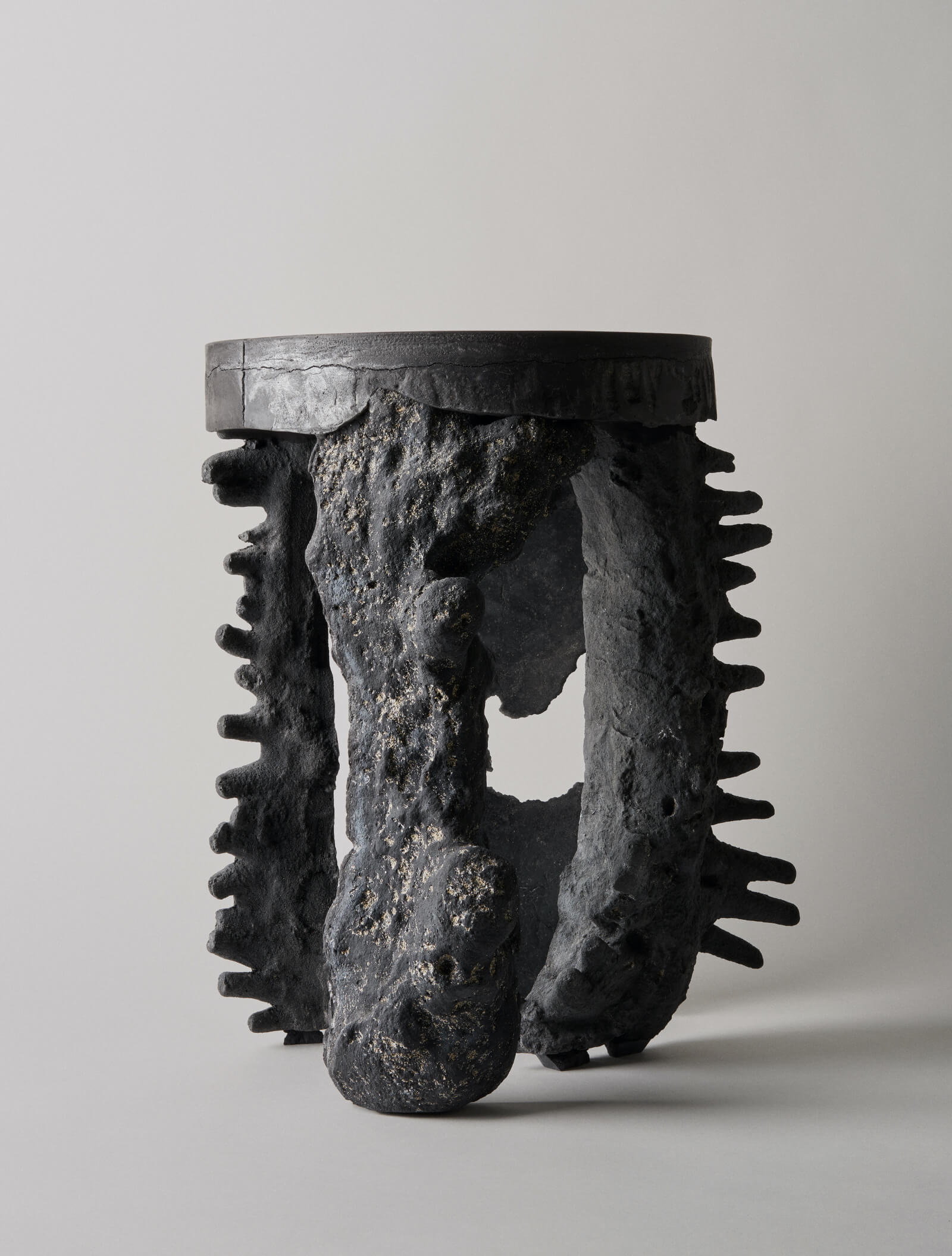
Kajsa Melchior, ‘Fictive Erosion’, 2020
COURTESY: Mint
Carissa Ten Tije’s ‘Bottom Ash Bench’, meanwhile, is a bold but elegant functional object made from the dregs of the dregs – the residue left after household rubbish has been incinerated in waste-to-energy power plants. Our eye was also caught by Dutch designer Willem van Hooff’s colourful and eccentric prehistoric pots.
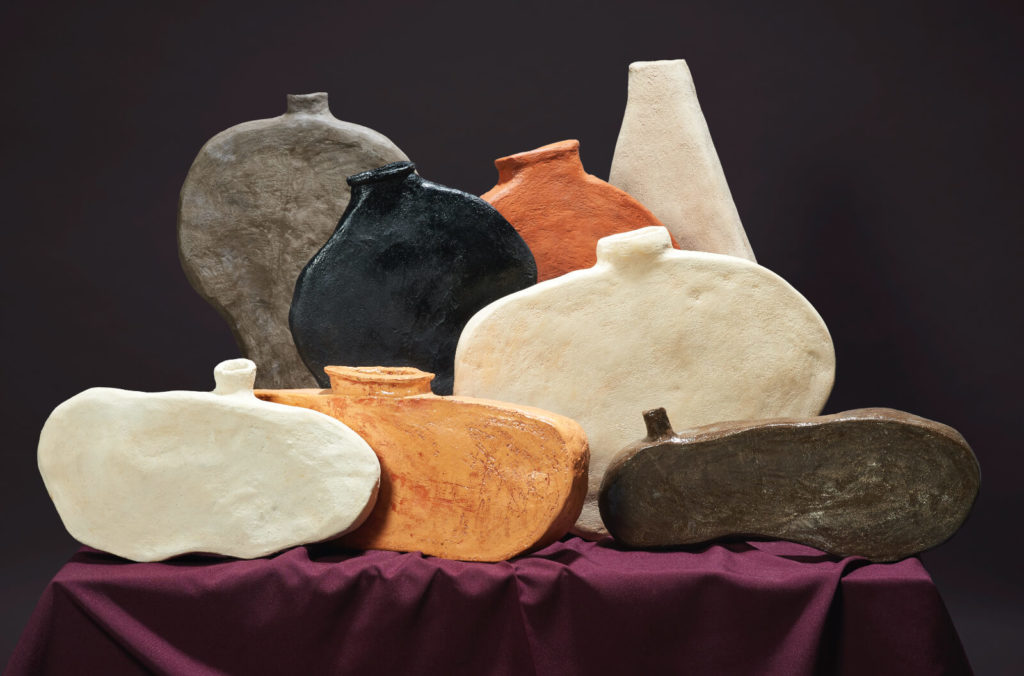
Willem van Hooff, ‘Core Vases’, 2019
COURTESY: Mint
Up the hill to Mayfair, we dropped in on the new London showroom of Italian designer Achille Salvagni, sunlight streaming through its windows on the corner of Hay Hill, Dover Street and Grafton Street. The most impressive new work is the ‘Alligator Sofa’, generously long and curvaceous – ready to swallow you up – with its enticing, warm sheepskin coat, resting on glamorous 24-carat gold leaf bases. It is partnered here with the latest, limed oak version of the 2018 ‘Amboseli’ lounge chair, also softly upholstered in sheepskin but with cast bronze details hinting at its Roman origin and African inspiration. In between sits one of six ‘Ad Maiora Tables’ (2019), with a smooth onyx top on a cast bronze structure, with polished bronze details. Overhead, the latest Airforce Blue version of ‘Spider Blue’ (2018) holds out its lacquered arms with onyx lights – clean-lined yet luxurious.
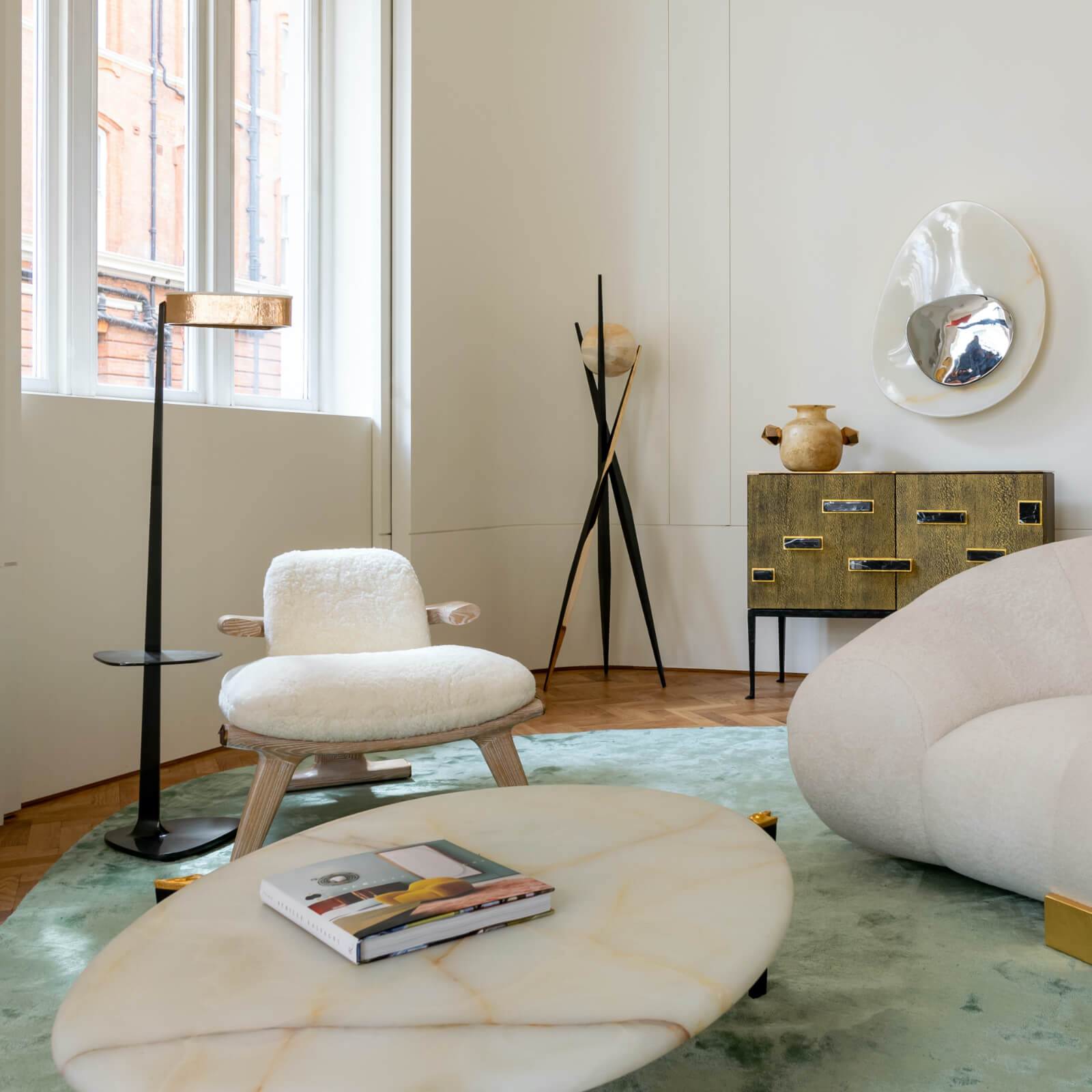
Installation view, Achille Salvagni
COURTESY: Achille Salvagni
In nearby Albemarle Street, Carpenters Workshop Gallery are celebrating their inaugural exhibition with British designer Paul Cocksedge. Given a free rein to explore a long-held ambition to work freely with industrial glass, Cocksedge has produced a poetic group of objects, which function as furniture, but carry with them entire histories of man’s relationship with nature and natural materials.

Installation view ‘Paul Cocksedge: Slump’
COURTESY: Carpenters Workshop Gallery
The slumped glass with its blue tinge and the natural irregularities owing to the heating process, seems to hold stilled within it its own process – its fiery, liquid origin – like a memory. Married with the rusted industrial steel piping sourced in Sheffield (where Cocksedge once studied Industrial Design), to make a table – or with individually chosen rocks and one tree stump, to make beguiling side tables – the slumped glass takes on a different character in each context, summoning different narratives.
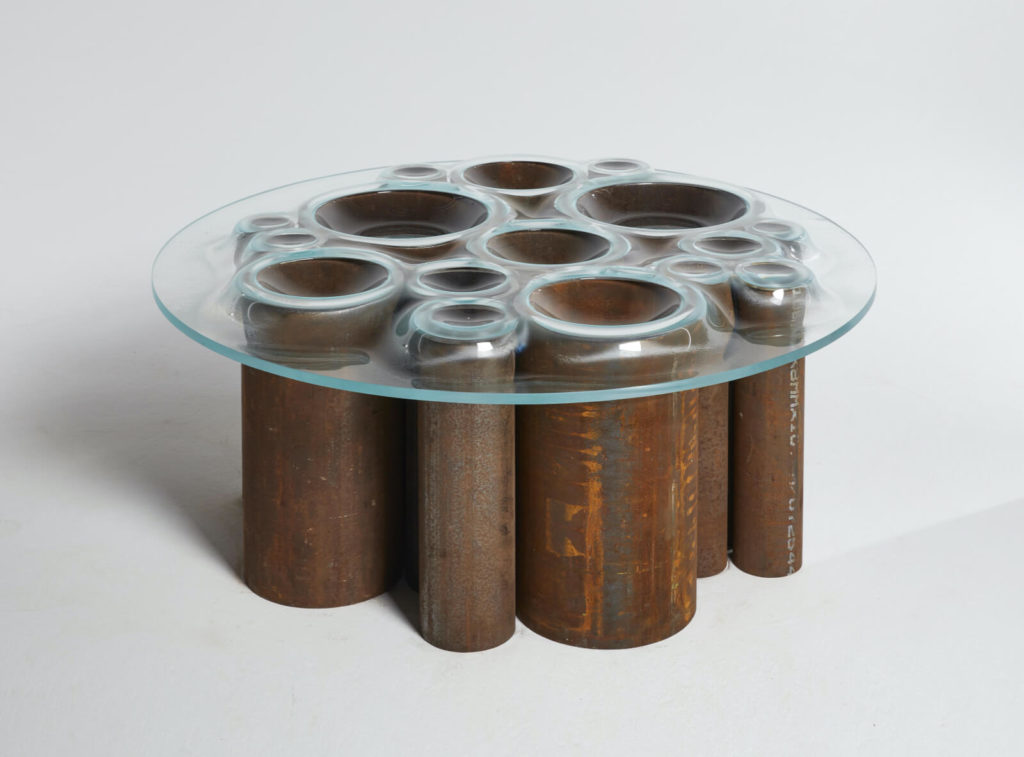
Paul Cocksedge, ‘Slump Bubble Table’, 2020
COURTESY: Carpenters Workshop Gallery
For a quite different take on side tables and vases, we sought out the new exclusive collection of extruded ceramic pieces by Floris Wubben for SCP, on show in SCP’s Shoreditch headquarters, by appointment. The ‘Killing My Darlings’ collection – a title resonant with all creative people, who understand well the necessary discipline of self-editing – Wubben’s ingenious process involves passing clay through a mould, before working on each piece to cut away or reinforce, and then glazing in an array of subtle earth or vibrant rainbow colours. Both the forms and the materials ultimately return us to nature – the force which has kept us sane during this difficult time.
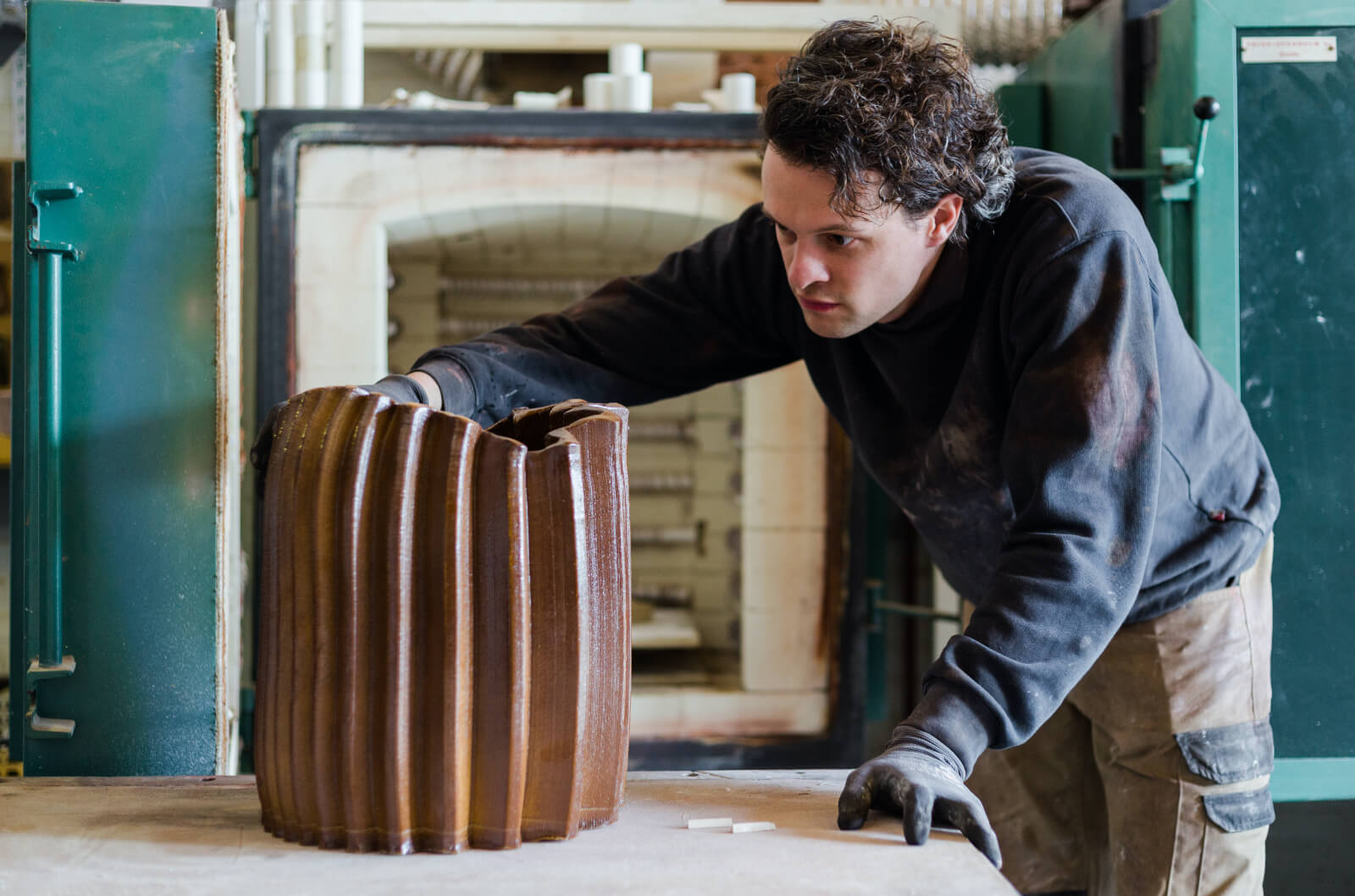
Floris Wubben working on his ‘Killing My Darlings’ collection
COURTESY: Floris Wubben
If one of the pleasures of LDF has always been the city-wide tramp in the late summer air, new digital tools are enabling designers and galleries to reach out beyond the metropolis. The New Craftsmen is showcasing its newest collections in Ways of Seeing, online curations of their latest offerings by interior designers. We have been particularly beguiled by Matthew Raw’s gorgeous green-tiled ‘Welcome Cabinet’, featured in the scheme of Waldo Works, also known as Sasha von Meister and Tom Bartlett, and the collaboration between embroiderer Aimee Betts and furniture-maker Gareth Neal, the quietly spectacular ‘Stitched Sideboard’ in ash and natural cord. The Design Edit has made a short film about their work together, below.
The New Craftsmen’s collaboration with Aimee Betts and Gareth Neal
COURTESY: TDE TV
London Design Festival – celebrating and promoting London as the design capital of the world.
